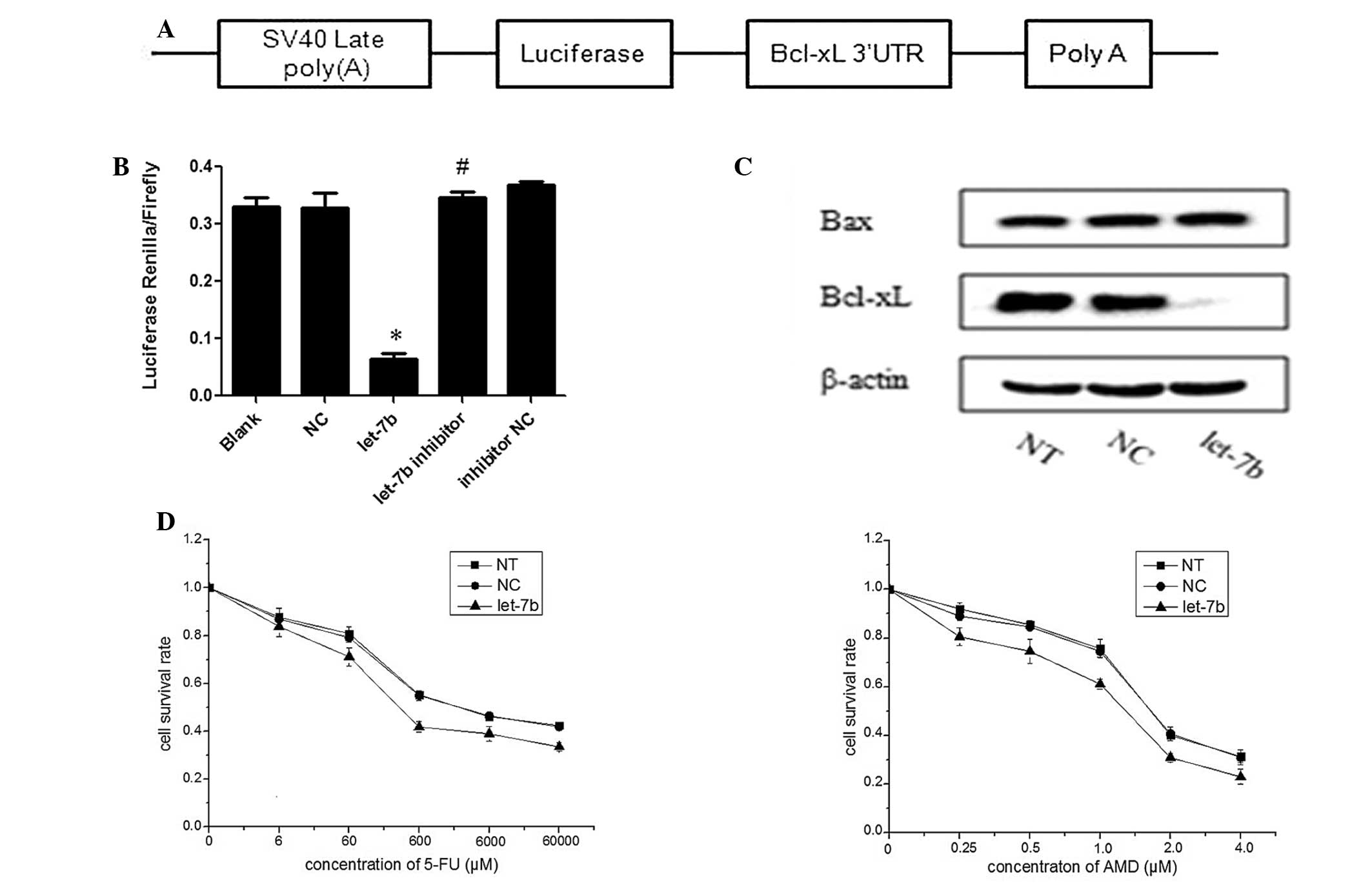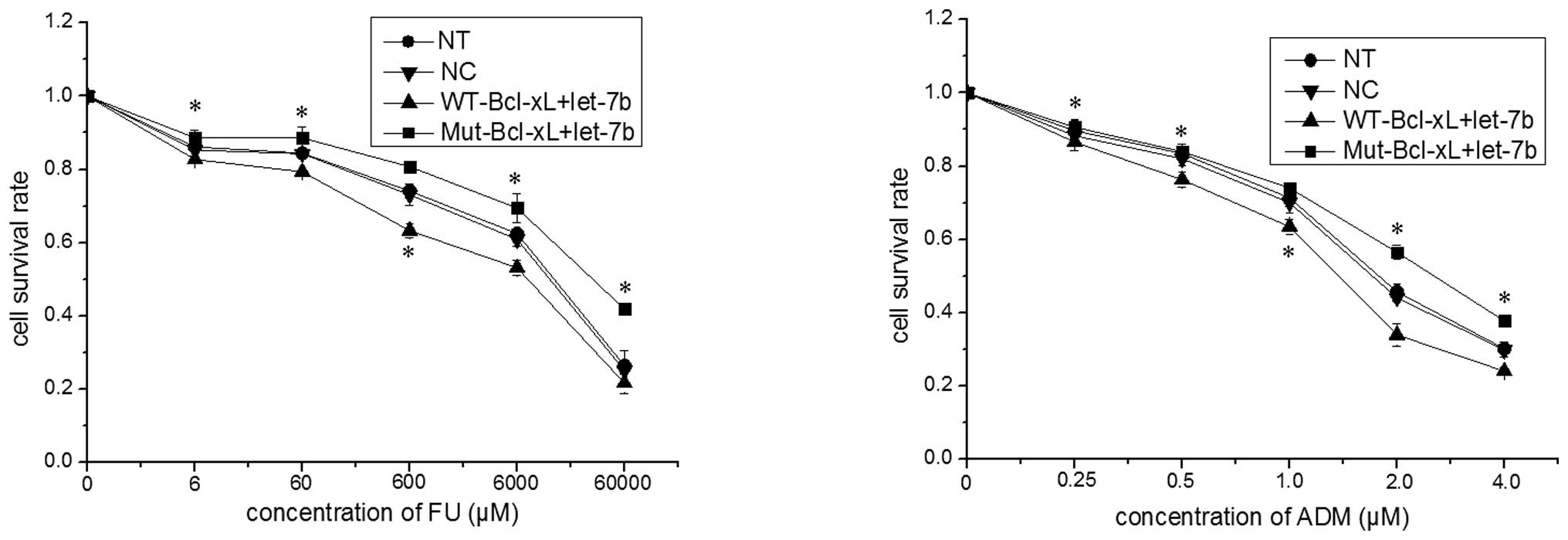|
1
|
Jemal A, Bray F, Center M M, Ferlay J,
Ward E and Forman D: Global cancer statistics. CA Cancer J Clin.
61:69–90. 2011. View Article : Google Scholar : PubMed/NCBI
|
|
2
|
Forouzanfar MH, Foreman KJ, Delossantos
AM, et al: Breast and cervical cancer in 187 countries between 1980
and 2010: a systematic analysis. Lancet. 378:1461–1484. 2011.
View Article : Google Scholar : PubMed/NCBI
|
|
3
|
Oostendorp LJ, Stalmeier PF, Donders AR,
et al: Efficacy and safety of palliative chemotherapy for patients
with advanced breast cancer pretreated with anthracyclines and
taxanes: a systematic review. Lancet Oncol. 12:1053–1061. 2011.
View Article : Google Scholar : PubMed/NCBI
|
|
4
|
Perez E and Muss HB: Optimizing adjuvant
chemotherapy in early-stage breast cancer. Oncology (Williston
Park). 19:1759–1767; discussion 1768, 1772–1774, 1777–1778.
2005.
|
|
5
|
Sarkar FH, Li Y, Wang Z, Kong D and Ali S:
Implication of microRNAs in drug resistance for designing novel
cancer therapy. Drug Resist Updat. 13:57–66. 2010. View Article : Google Scholar : PubMed/NCBI
|
|
6
|
Majumder S and Jacob ST: Emerging role of
microRNAs in drug-resistant breast cancer. Gene Expr. 15:141–151.
2011. View Article : Google Scholar
|
|
7
|
Garzon R, Marcucci G and Croce CM:
Targeting microRNAs in cancer: rationale, strategies and
challenges. Nat Rev Drug Discov. 9:775–789. 2010. View Article : Google Scholar : PubMed/NCBI
|
|
8
|
Lee S and Vasudevan S:
Post-transcriptional stimulation of gene expression by microRNAs.
Adv Exp Med Biol. 768:97–126. 2013. View Article : Google Scholar
|
|
9
|
Bartel DP: MicroRNAs: target recognition
and regulatory functions. Cell. 136:215–233. 2009. View Article : Google Scholar : PubMed/NCBI
|
|
10
|
Guo H, Ingolia NT, Weissman JS and Bartel
DP: Mammalian microRNAs predominantly act to decrease target mRNA
levels. Nature. 466:835–840. 2010. View Article : Google Scholar : PubMed/NCBI
|
|
11
|
Djuranovic S, Nahvi A and Green R:
miRNA-mediated gene silencing by translational repression followed
by mRNA deadenylation and decay. Science. 336:237–240. 2012.
View Article : Google Scholar : PubMed/NCBI
|
|
12
|
Lujambio A and Lowe SW: The microcosmos of
cancer. Nature. 482:347–355. 2012. View Article : Google Scholar : PubMed/NCBI
|
|
13
|
Singh R and Mo YY: Role of microRNAs in
breast cancer. Cancer Biol Ther. 14:201–212. 2013. View Article : Google Scholar : PubMed/NCBI
|
|
14
|
Sandhu S and Garzon R: Potential
applications of microRNAs in cancer diagnosis, prognosis, and
treatment. Semin Oncol. 38:781–787. 2011. View Article : Google Scholar : PubMed/NCBI
|
|
15
|
Cho WC: MicroRNAs as therapeutic targets
and their potential applications in cancer therapy. Expert Opin
Ther Targets. 16:747–759. 2012. View Article : Google Scholar : PubMed/NCBI
|
|
16
|
Mishra PJ, Humeniuk R, Mishra PJ, et al: A
miR-24 microRNA binding-site polymorphism in dihydrofolate
reductase gene leads to methotrexate resistance. Proc Natl Acad Sci
USA. 104:13513–13518. 2007. View Article : Google Scholar : PubMed/NCBI
|
|
17
|
Saetrom P, Biesinger J, Li SM, et al: A
risk variant in an miR-125b binding site in BMPR1B is associated
with breast cancer pathogenesis. Cancer Res. 69:7459–7465. 2009.
View Article : Google Scholar : PubMed/NCBI
|
|
18
|
Wu Y, Xiao Y, Ding X, et al: A
miR-200b/200c/429-binding site polymorphism in the 3′ untranslated
region of the AP-2α gene is associated with cisplatin resistance.
PLoS One. 6:e290432011. View Article : Google Scholar
|
|
19
|
Brendle A, Lei H, Brandt A, et al:
Polymorphisms in predicted microRNA-binding sites in integrin genes
and breast cancer: ITGB4 as prognostic marker. Carcinogenesis.
29:1394–1399. 2008. View Article : Google Scholar : PubMed/NCBI
|
|
20
|
Leber B, Geng F, Kale J and Andrews DW:
Drugs targeting Bcl-2 family members as an emerging strategy in
cancer. Expert Rev Mol Med. 12:e282010. View Article : Google Scholar : PubMed/NCBI
|
|
21
|
Thomadaki H, Talieri M and Scorilas A:
Treatment of MCF-7 cells with taxol and etoposide induces distinct
alterations in the expression of apoptosis-related genes BCL2,
BCL2L12, BAX, CASPASE-9 and FAS. Biol Chem. 387:1081–1086. 2006.
View Article : Google Scholar : PubMed/NCBI
|
|
22
|
Simões-Wüst AP, Schürpf T, Hall J, et al:
Bcl-2/bcl-xL bispecific antisense treatment sensitizes breast
carcinoma cells to doxorubicin, paclitaxel and cyclophosphamide.
Breast Cancer Res Treat. 76:157–166. 2002. View Article : Google Scholar : PubMed/NCBI
|
|
23
|
Baek D, Villén J, Shin C, et al: The
impact of microRNAs on protein output. Nature. 455:64–71. 2008.
View Article : Google Scholar : PubMed/NCBI
|
|
24
|
Michels J, Kepp O, Senovilla L, et al:
Functions of BCL-X L at the interface between cell death and
metabolism. Int J Cell Biol. 2013:7052942013. View Article : Google Scholar : PubMed/NCBI
|
|
25
|
Billen LP, Kokoski CL, Lovell JF, et al:
Bcl-XL inhibits membrane permeabilization by competing with Bax.
PLoS Biol. 6:e1472008. View Article : Google Scholar : PubMed/NCBI
|
|
26
|
Roush S and Slack FJ: The let-7 family of
microRNAs. Trends Cell Biol. 18:505–516. 2008. View Article : Google Scholar : PubMed/NCBI
|
|
27
|
Boyerinas B, Park SM, Hau A, et al: The
role of let-7 in cell differentiation and cancer. Endocr Relat
Cancer. 17:F19–F36. 2010. View Article : Google Scholar
|
|
28
|
O’Day E and Lal A: MicroRNAs and their
target gene networks in breast cancer. Breast Cancer Res.
12:2012010. View
Article : Google Scholar
|
|
29
|
Mishra PJ, Mishra PJ, Banerjee D and
Bertino JR: MiRSNPs or MiR-polymorphisms, new players in microRNA
mediated regulation of the cell: Introducing microRNA
pharmacogenomics. Cell Cycle. 7:853–858. 2008. View Article : Google Scholar : PubMed/NCBI
|
|
30
|
Blitzblau RC and Weidhaas JB: MicroRNA
binding-site polymorphisms as potential biomarkers of cancer risk.
Mol Diagn Ther. 14:335–342. 2010. View Article : Google Scholar
|
|
31
|
Yu Z, Li Z, Jolicoeur N, et al: Aberrant
allele frequencies of the SNPs located in microRNA target sites are
potentially associated with human cancers. Nucleic Acids Res.
35:4535–4541. 2007. View Article : Google Scholar : PubMed/NCBI
|
|
32
|
Chen K, Song F, Calin GA, et al:
Polymorphisms in microRNA targets: a gold mine for molecular
epidemiology. Carcinogenesis. 29:1306–1311. 2008. View Article : Google Scholar : PubMed/NCBI
|














